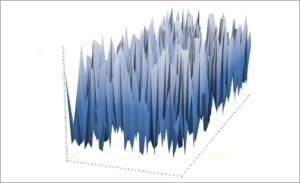Simulating Populations III: a New Statistical Indicator of Complex Population Kinetics

In the previous parts I-II of this series I described two variants of spatially extended population dynamics, represented by a standard Coupled map lattice (CML) model and the Zoomer model. In this post I show how a specific statistical-mechanical property of scale-free space use may reveal the difference between these two space use conditions despite an apparent similar level of spatial autocorrelation below the population’s carrying capacity. First, a brief summary of the model conditions (for details, see Part I-II): The environment is set to be homogeneous (be relaxed in upcoming posts), in order to have focus on intrinsic population kinetics. The time resolution is set to be fine-grained, implying that the main driving force for change during respective time increments is individual re-shuffling rather than birth and death rates (net growth rate set to ca 1% in the present simulations). For the CML examples (implying a scale-specific process in statistical-mechan...


